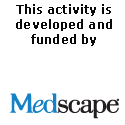Sunday, June 08, 2008
Omega-3 en criminelen
 Naproxen, Prednisolone May Be Effective First-Line Treatment of Gout News Author: Laurie Barclay, MD
June 2, 2008 — Gout is treated effectively with naproxen or oral prednisolone as a first-line treatment, according to the results of a double-blind, randomized controlled trial reported in the May 31 issue of The Lancet. "Non-steroidal anti-inflammatory drugs [NSAIDs] and colchicine used to treat gout arthritis have gastrointestinal, renal, and cardiovascular adverse effects," write Hein J.E.M. Janssens, MD, from the Radboud University Nijmegen Medical Centre in Nijmegen, the Netherlands, and colleagues. "Systemic corticosteroids might be a beneficial alternative. We investigated equivalence of naproxen and prednisolone in primary care." With use of computer-generated randomization, 120 primary-care patients with monoarticular gout confirmed by the presence of monosodium urate crystals were randomized to receive either prednisolone (35 mg once a day; n = 60) or naproxen (500 mg twice a day; n = 60), for 5 days. Both patients and clinicians were blinded to treatment assignment, and analyses were per protocol and by intent-to-treat. The main endpoint was pain intensity measured on a 100-mm visual analog scale, with the a priori margin for equivalence set at 10%. Per-protocol analyses included 59 patients in each group (data were incomplete for 1 patient in each group). Reduction in pain score after 90 hours of treatment was 44.7 mm for prednisolone and 46.0 mm for naproxen (difference, 1.3 mm; 95% confidence interval [CI], –9.8 to 7.1), suggesting equivalence. Difference in the size of change in pain was 1.57 mm (95% CI, –8.65 to 11.78). Both groups had similar adverse effects, which were minor and had resolved by 3-week follow-up. "Oral prednisolone and naproxen are equally effective in the initial treatment of gout arthritis over 4 days," the study authors write. "The present study provides a strong argument to consider prednisolone as a first treatment option in patients with gout." Limitations of the study include small sample size, assessment of complete relief of symptoms at 90 hours based solely on patients' self-reporting at 3 weeks, disability outcomes assessed with nonvalidated scales, and study population limited to white Dutch people. "In addition to better safety, the direct drug costs would also be less if systemic corticosteroids (such as prednisolone) were first-line drug choice," the study authors conclude. "In the context of economic benefits, the additional costs of gastroprotective drugs added to NSAID-treatment, should also be taken into account." The Rheumatology Research Fund Arnhem, the Netherlands, supported this study. The study authors have disclosed no relevant financial relationships. In an accompanying editorial, Timothy H. Rainer, MD, and Colin A. Graham, MPH, from the Chinese University of Hong Kong, Prince of Wales Hospital, Shatin, New Territories, Hong Kong SAR, call the results of this study "useful and important information to front-line staff who manage patients presenting with acute joint pain." "Clearly this study needs to be repeated in other locales with different incidences of gastrointestinal disease," Dr. Rainer and Mr. Graham write. "Changes in clinical practice often need strong marketing forces, which might not be forthcoming unless drug companies stand to benefit from newer and more expensive drugs. Nevertheless Janssens' trial will go some way to satisfy both rheumatological purists and front-line pragmatists that short-term oral corticosteroids are as equally effective as NSAIDs in the initial treatment of acute gout and gout-like syndrome." Dr. Rainer and Mr. Graham have disclosed no relevant financial relationships. Lancet. 2008;371:1816-1818, 1854-1860. Clinical ContextCurrently, the first choice of drug treatment of gout is NSAIDs, despite their gastrointestinal tract and cardiovascular risks. These adverse events are of particular concern in patients with gout, most of whom are middle aged or elderly and many of whom have comorbid renal and cardiovascular conditions. In this patient population, systemic corticosteroids might be a safer option, as their adverse effects such as osteoporosis, fluid retention, and hyperglycemia typically occur only with chronic use. The only evidence on the effectiveness of systemic corticosteroids for gout is from 3 studies included in a recent systematic Cochrane review. The goal of the present study was to determine whether oral prednisolone is equivalent to naproxen in patients with confirmed gouty arthritis. Study Highlights
Pearls for Practice
CME/CE Test Medscape Medical News 2008. ©2008 Medscape Legal Disclaimer The material presented here does not necessarily reflect the views of Medscape or companies that support educational programming on www.medscape.com. These materials may discuss therapeutic products that have not been approved by the US Food and Drug Administration and off-label uses of approved products. A qualified healthcare professional should be consulted before using any therapeutic product discussed. Readers should verify all information and data before treating patients or employing any therapies described in this educational activity. | 
| |||||||||||||